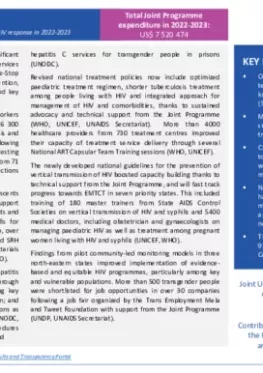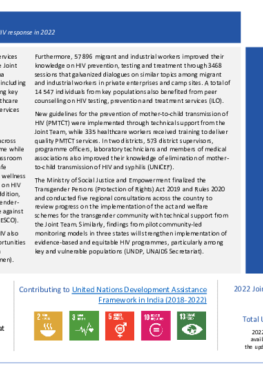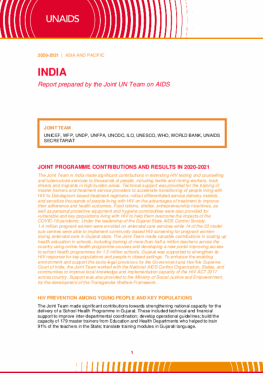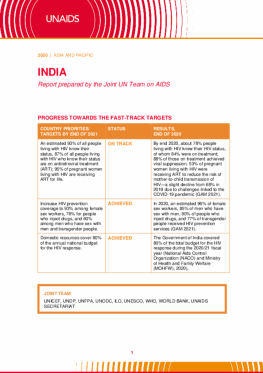|
India
The Joint Programme in India continued to make significant contributions in scaling up access to integrated HIV services across the country. For instance, newly established One-Stop Centres improved access to community-led HIV prevention, testing and linkages to treatment among vulnerable and key populations in 5 districts (UNFPA).
In Gujarat State, over 114 000 migrant and informal workers were sensitized on HIV prevention, of whom about 26 300 people were voluntarily screened for HIV and tuberculosis and 10% were linked to social protection schemes (ILO). Following the government’s introduction of dual HIV and syphilis testing kits, 700 staff members of State AIDS Control Societies from 71 districts are better equipped to timely detect infections (UNICEF, WHO).
The Red Ribbon Clubs sensitized around 500 000 adolescents and young people on HIV prevention and SRH through support from the Joint Programme. In two states, 400 000 students and 52 800 teachers improved their knowledge and skills for prevention and management of HIV and SRH. In addition, over 7500 women gained a better understanding of HIV and SRH through information, education and communication materials disseminated in these two states (UNICEF, UNFPA, UNESCO).
Strategic evidence for the national HIV, tuberculosis, hepatitis and harm reduction programmes further improved through programmatic mapping and HIV size estimation among key populations; annual HIV estimation for general population; and needs assessment of incarcerated people in Central Prisons as well as women in shelter homes in two states (WHO, UNODC, UNAIDS Secretariat). Model standard operating procedures were also developed to support implementation of HIV and hepatitis C services for transgender people in prisons (UNODC).





